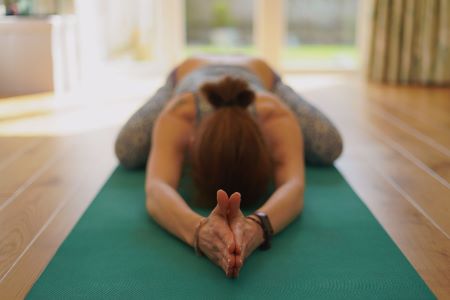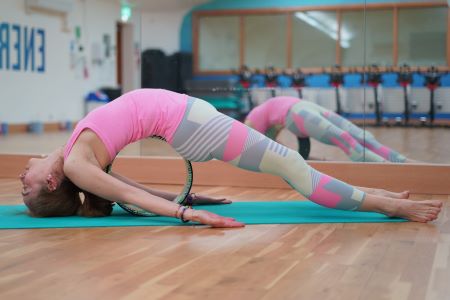Yoga, a well-loved practice worldwide, comes in various styles – each offering unique benefits and experiences. But among the numerous styles, there is one that has been gaining a remarkable amount of traction lately: Yin Yoga. I was surprised at first, but now that I practice and teach it, I understand the reasons behind this phenomenon.
So, what makes Yin Yoga so special? Let’s find out…
Understanding Yin Yoga
Unlike the more physically intense styles, such as Vinyasa and Ashtanga, Yin Yoga is a slow-paced style of Yoga, where postures are held for several minutes. A modern interpretation of ancient Yoga practices, Yin was pioneered in 1980s California and typically features poses held for anywhere between three and twenty minutes each. The poses are held for a long period of time to target the connective tissues (such as the ligaments) rather than focusing on the muscles. As a result, the asanas are more passive holds, with little muscular engagement.
To help you sink into the poses, your body is supported with props to allow you to relax, breathe into the stretch and allow gravity to do most of the work. The aim is to bring mental, physical, and spiritual together as it stimulates our ‘Nadis’. Similar to meridians in Chinese medicine, Nadis are considered to be pathways in the body that carry energy, water, air, blood and bodily fluids around. You might also hear them referred to as ‘energy lines’.

The Yin approach is not just about physical flexibility or strength, but also about a mental and spiritual journey. The stationary time in poses allows students to create a space for introspection and self-awareness which I understood myself through my own practice. Like many people, when I first started Yin yoga I honestly found it boring until it all clicked together. As I attended more classes the benefits to my physical body became more noticeable along with my mental wellbeing, which is why I decided train as a Yin teacher. Now that I am teaching this discipline, I am seeing first-hand the benefits of Yin Yoga for my students.
Yin Yoga and Mindfulness
Yin Yoga’s gentle, contemplative nature serves as a powerful tool for cultivating mindfulness, taking you to a state of keen observation, helping you pay closer attention to the nuances of your physical and mental states. The extended duration of each pose allows ample time for the students to focus on their breathing patterns, offering a calming influence on both body and mind.
Throughout the class you are reminded to move mindfully meaning you need to observe your every move and realise the impact it has on your body, your mind and everyone else around you. Becoming conscious of our actions helps us become aware of our actions in real life too thus helping us be in harmony with our environment.
Mindfulness in Yin Yoga is more than just awareness of actions
Holding a pose for an extended period can bring up a variety of emotions, and Yin Yoga offers a safe and supportive environment to explore these feelings. This combination of physical and emotional introspection can lead to profound self-discovery and personal growth.
Mindfulness in Yin Yoga is more than just awareness of actions—it’s a comprehensive observation of the process itself. It requires one to take note of how each pose impacts them physically and emotionally. It offers an opportunity to develop a more intimate knowledge of one’s body, to enhance concentration, and to nurture a deeper sense of tranquillity.
It’s a journey of tuning in, of noticing and honouring one’s limits, and of cultivating a profound sense of inner peace. Remember, the purpose of mindfulness in Yin Yoga is not to strive for perfection, but rather to develop a deeper connection with one’s body and mind.
The Balance of Yin and Yang
The philosophy of Yin and Yang hails from ancient China and underscores the importance of harmony between two divergent forces. Typically, Yang is seen as dynamic, warm, and masculine, while Yin embodies passivity, coolness, and femininity. When applied to yoga, most modern styles are considered ‘Yang’—they are vigorous, generate heat, and concentrate on strengthening the muscular system. Conversely, Yin Yoga manifests the tranquil, cooling elements of the Yin principle.
Maintaining an equilibrium between these opposing yet interconnected energies within your yoga routine is essential for holistic well-being. Yin Yoga serves as the counterpoint to more intense yoga practices, providing an opportunity to decelerate and soften in a world that often values speed and intensity.
Actually, Yin is at the opposite of what society wants us to do which is do more and more and more until you are completely exhausted. Yin teaches us to do less. For example in a yin class it is rare to do more than 5 poses. The contrast with what society is telling us we should do is almost shocking to start with. But then when you leave the class feeling so much at peace with yourself and the world around, I find myself craving more of this inner and physical peace.
Yin Yoga offers a sanctuary where you can quiet the mind, tune into your body, and explore the power of serenity amidst life’s constant motion.
Accessible to All Levels
One of the standout attributes of Yin Yoga is its universal appeal. Its unassuming, passive nature makes it an approachable choice for individuals at any stage of their yoga journey, making Yin Yoga a suitable practice for novices and experienced yogis alike. The poses are straightforward and can be modified to meet the individual’s range of motion and level of comfort.
The beauty of Yin Yoga lies in its emphasis on introspection rather than perfection. The focus is not on achieving a perfect pose but on learning to pay attention to the signals of your body and respect its boundaries. This gentle approach helps to cultivate a non-judgmental attitude towards oneself and reinforces the importance of self-care in the practice of yoga.
Another factor contributing to Yin Yoga’s accessibility is the use of props, such as bolsters, blocks, and blankets. These items provide extra support and ensure a safer and more comfortable practice. They are especially useful in helping beginners and those with physical limitations to access the deeper, rejuvenating benefits of each pose without strain or discomfort.

The emphasis on mindfulness and self-awareness can be particularly beneficial for individuals navigating stress or emotional upheaval, providing them with a peaceful space to navigate their inner landscape. Its flexible nature allows practitioners to experience the calming and restorative benefits of yoga, regardless of their age, flexibility, or level of experience.
Yin Yoga’s Therapeutic Benefits
Yin Yoga’s therapeutic advantages are far-reaching and extensive. This style of yoga, with its slow and mindful pace, has a calming effect on the mind and the nervous system, which can help alleviate stress and anxiety. The peaceful state induced by a Yin practice fosters an overall sense of well-being and tranquillity.
Combats the stiffness of aging and sedentary habits
The long duration of pose holds inherent in Yin Yoga enhance flexibility and mobility in the joints. This is particularly beneficial in combating the stiffness that frequently accompanies aging or sedentary habits.
An often-overlooked benefit of Yin Yoga is its potential to aid in recovery and healing. The release experienced in Yin poses can help the body recover from more intense physical activities. By offering a space for the body to gently stretch and repair itself, Yin Yoga can complement and enhance the benefits of more rigorous exercise regimes. The very sporty people and athletes benefit greatly from their Yin yoga as Yin allows the muscles to stretch which they would not be able to attain in a simple stretch session after their run for example.
Yin Yoga also focuses on the body’s deep connective tissues, offering therapeutic benefits beyond those achieved by more superficial exercise. By stretching these tissues, Yin yoga can help improve circulation, especially in the joints and hips.
After a few classes of Yin yoga, there is no doubt you realise how it is helping with flexibility in the body and joint mobility. My hips are so thankful to Yin! I used to have severe pain if I sat for too long but now the pain is gone and I can get into poses I could not before! All my students have very quickly reported the benefits of their Yin practice on their aging bodies.
In conclusion, the therapeutic benefits of Yin Yoga extend beyond the physical. The practice also nurtures mental and emotional well-being, offering a space for introspection and self-discovery.
Our search for constant rest and regeneration is finally fulfilled thanks to Yin yoga. By integrating Yin yoga into your life routine, you’re not just taking care of your body, but also caring for your mind and spirit. No wonder Yin Yoga is becoming so popular.



